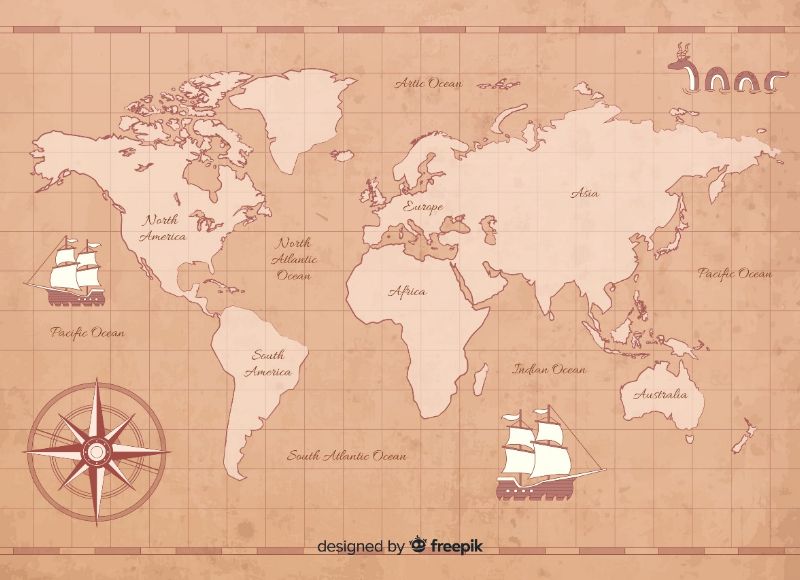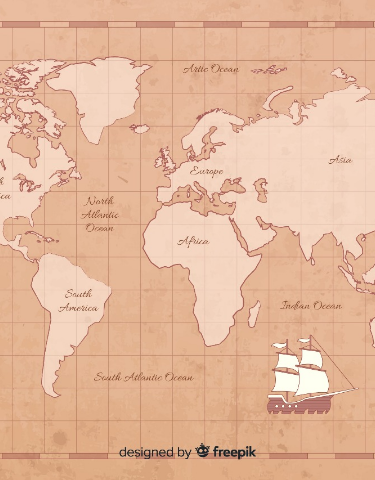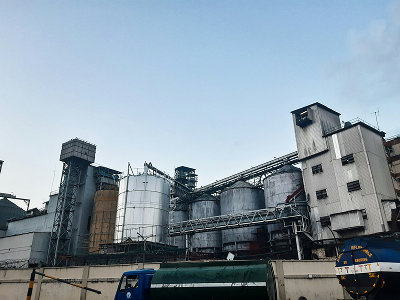History, we are told, is the story of humanity. It gives us identity, direction, and lessons from those who walked before us. Yet, beneath the grand narratives of civilizations and revolutions lies a quiet, unsettling question: how much of history can we actually trust? For all its textbooks and timelines, history may be one of the riskiest truths we believe in—because it is not simply what happened, but what was remembered, interpreted, and retold.
In this sense, history itself becomes a paradox: a discipline dedicated to truth, yet built upon the hidden risks from uncertainty.
1. The Fragility of Memory and the Making of History
At its core, history is an exercise in reconstruction. The historian is not a witness but a detective, piecing together evidence long after the crime scene has faded. Yet even the best reconstruction is limited by what remains—and by who is doing the reconstructing.
Early civilizations like Mesopotamia, Egypt, and the Indus Valley left behind clay tablets, tombs, and relics. But what they didn’t leave behind—oral traditions, feelings, failures, unrecorded conflicts—forms an even larger void. Over time, selective preservation morphs into selective memory.
Memory, whether collective or personal, is inherently biased. Nations remember victories more than defeats. Leaders immortalize triumphs, not mistakes. Empires glorify conquest, rarely colonization. In the process, the tapestry of world history becomes stitched together not by objective threads, but by chosen narratives. This leads to epistemic risk – our understanding of truth depends on incomplete and often manipulated records.
2. The Archaeologist’s Dilemma: Reading Silence
Archaeology is often imagined as a discipline of discovery—dusting off ruins and unlocking secrets. But archaeologists deal as much with absence as with presence. Every find is an interpretation, and every interpretation carries the uncertain risk of error.
Consider the mysterious Indus Valley Civilization. Despite thousands of artifacts, its script remains undeciphered. The absence of linguistic clarity leaves historians guessing the nature of its society—was it egalitarian or hierarchical, peaceful or militarized? Each new theory reshapes our sense of what “ancient civilization” even means.
Similarly, the discovery of Göbekli Tepe in Turkey—an advanced temple complex older than Stonehenge—challenged the established timeline of human evolution. For decades, historians assumed agriculture preceded religion. Göbekli Tepe reversed that logic. Suddenly, belief, not bread, became the cornerstone of civilization.
In archaeology, then, history is not a fixed narrative but a moving target. A single dig site can upend centuries of academic consensus. The risk lies not just in misinterpretation but in overconfidence—in believing that fragments of stone can fully tell the story of the human soul.
3. Whose History Is It, Anyway?
One of history’s greatest risks lies in ownership. Who decides what the “truth” is?
Throughout time, power has shaped the narrative. Colonial histories glorified exploration while erasing indigenous voices. Monarchs and dictators sponsored chroniclers to immortalize their reigns. Even modern governments curate national textbooks to promote unity—or, at times, conformity.
For instance, the portrayal of the British Empire differs dramatically between UK and Indian textbooks. The same events—like the 1857 rebellion—are either called a “mutiny” or a “war of independence.” Both are technically true, yet their emotional and political implications are worlds apart.
This subjectivity transforms history from a neutral record into a tool of influence. What we call “heritage” or “national pride” often masks centuries of propaganda. Education systems reinforce these narratives, making history both a source of identity and an instrument of control.
Thus, history becomes risky not because it is false, but because it is curated—designed to serve agendas rather than truth.
4. History in the Classroom: The Pedagogy of Partial Truths
Education systems across the world treat history as a cornerstone of civic learning. Yet the way history is taught often flattens complexity into memorized certainties. Students are tested not on how they interpret events, but on whether they recall them “correctly.”
But what does “correct” mean when the past itself is contested?
In some countries, school curricula downplay uncomfortable truths such as slavery, genocide, or caste oppression. In others, historical revisionism is actively encouraged to suit contemporary politics. This creates generational risks and transforms history from a discipline of inquiry into an act of indoctrination where the society inherits not knowledge, but belief.
Educators face a difficult balance—how to teach pride without propaganda, and how to honour cultural memory without distorting it. The very act of simplifying history for classrooms introduces distortion and authenticity risk. As the historian E. H. Carr famously said, “The facts of history never come to us pure. They are always refracted through the mind of the recorder.”
In other words, history taught is never history itself—it is history translated, packaged, and sometimes sanitized.
5. The Digital Age: A New Kind of Historical Risk
In today’s world, history is being written in real-time. Tweets, videos, news headlines, and digital archives flood our collective memory. While technology democratizes storytelling, it also amplifies digital misinformation risks.
The danger is twofold. First, the sheer volume of digital content risks burying authenticity beneath noise. Second, digital manipulation—through deepfakes, AI-generated text, or selective editing—blurs the line between documentation and fabrication.
Tomorrow’s historians may find themselves analysing fake evidence with real consequences. For example, imagine trying to study the early 21st century through the lens of social media. What will they make of memes, viral trends, or polarized narratives? Which digital “truth” will survive, and which will be lost to obsolescence or deletion?
Just as fires and floods once destroyed papyrus and parchment, cyberattacks and platform shutdowns can erase digital archives. The risk behind modern history, therefore, lies in the fragility of data—the most abundant yet unstable record humanity has ever produced thus necessitating ethical risk management.
6. Cultural Bias and the Illusion of Universality
Every civilization believes it is the protagonist of world history. Western historiography often treats the Renaissance, Enlightenment, and Industrial Revolution as the defining moments of human progress. Yet, parallel achievements in China, India, Africa, and the Islamic world face universality risk and are often relegated to footnotes.
This imbalance creates a “single story” of global development, privileging certain regions and philosophies over others. It risks creating cultural myopia—where we interpret the world through the lens of one civilization’s timeline.
Historians like Yuval Noah Harari and Dipesh Chakrabarty have challenged this Eurocentrism, calling for “provincializing Europe”—acknowledging that multiple civilizations contributed to the human journey. But while academic awareness has grown, textbooks, museums, and media still perpetuate skewed narratives.
Thus, history’s greatest risk may be its claim to universality. For every empire that chronicles its glory, there is a tribe, a language, a people whose story has vanished into silence.
7. History as Identity, History as Risk
Why does this matter? Because history shapes identity—and identity drives behaviour.
When nations mythologize their pasts, they create emotional anchors. Pride becomes patriotism, which can easily morph into nationalism. Historical wounds—real or perceived—fuel conflicts, from territorial disputes to religious intolerance.
Consider how interpretation bias has reignited tensions across the world: the rewriting of school syllabi, the demolition or defense of monuments, the debates over colonial reparations. Each side claims to represent the “truth.” Yet, each truth is a risk—because it justifies present-day actions in the name of the past.
Collective memory can unite societies or divide them. It can inspire resilience or revenge. The same event can be memorialized as victory in one nation and tragedy in another. Thus, the politics of remembrance often carries more risk than the event remembered.
8. The Historian’s Burden: Between Fact and Faith
Historians, like scientists, seek evidence. But unlike scientists, they cannot repeat experiments. Once a moment passes, it cannot be reproduced—only interpreted.
This introduces a philosophical tension. Is history a science or an art? The answer lies somewhere in between. While historians rely on empirical data—documents, artefacts, testimonies—they must also weave these into coherent stories. Interpretation fills the gaps where data ends.
The risk, therefore, is interpretive bias. Every historian is influenced by their time, culture, and worldview. Even the act of choosing what not to study shapes collective knowledge. Silence, too, becomes a statement.
Some scholars argue that complete objectivity is impossible. The best we can aim for is transparency—acknowledging our biases and continually questioning established truths. In this way, history becomes a living discipline, not a static record.
9. When History Becomes a Weapon
Perhaps the most dangerous risk of all is when history is weaponized.
Throughout the 20th and 21st centuries, political movements have used selective history to justify aggression or exclusion. Ideologies thrive on mythmaking—glorifying a “golden age” and vilifying the “other.” Once history becomes a rallying cry rather than a reflection, it stops enlightening and starts inciting.
This is not new. Ancient rulers erected monuments to assert divinity. Modern regimes rewrite textbooks to legitimise authority. Even democracies curate official versions of history to foster unity. But when the past is edited to serve the present, the line between education and manipulation blurs dangerously.
In the age of global connectivity, misinformation spreads faster than ever. A distorted version of history can trigger global consequences—polarizing communities, undermining trust, and destabilizing societies. Thus, history carries geopolitical risk as real as any financial or environmental threat.
10. The Paradox of History: Truth Through Uncertainty
So, is history reliable? The honest answer is: not entirely. Yet, it is indispensable.
We cannot dismiss history simply because it is imperfect. Rather, its imperfection is what makes it powerful. The act of questioning history is itself a safeguard against manipulation. By recognising risk in world history —its biases, silences, and distortions—we learn to approach it critically rather than blindly.
Perhaps history’s true value lies not in certainty, but in reflection. It reminds us that truth is often contested, that every perspective is partial, and that the search for understanding is ongoing. The risk of history, then, is also its beauty—it forces us to confront ambiguity, conduct risk identification, and to keep asking: what really happened, and why does it matter now?
Final Reflection: Is History Itself a Risk?
Maybe history is a risk—the risk of believing too much, or too little. It’s the risk of trusting human memory to outlive its fallibility. It’s the risk of building the future upon the shifting sands of interpretation.
And yet, without history, we would have no compass. No sense of continuity. No way to learn, to evolve, or to belong.
The paradox endures: to progress, we must depend on a discipline that is both fragile and flawed. In understanding that fragility lies our greatest wisdom and most effective risk management. For only when we acknowledge the risk of misinterpreting history can we begin to write it—this time—with honesty, humility, and hope.















